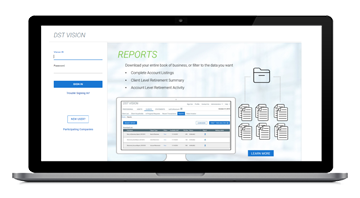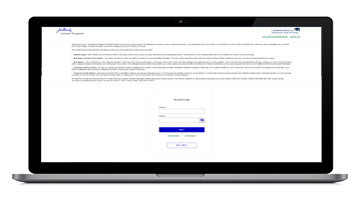What is stagflation, and how likely is it?
Recent tariff announcements and the potential for escalating trade tensions with key U.S. partners are raising concerns about the return of stagflation, a challenging economic scenario characterized by high inflation, weak growth, and high unemployment.

What is it?
As the name suggests, stagflation defines a stagnating economy alongside high inflation and elevated unemployment. The term gained widespread use during the stagflation crisis of the late 1970s, when a sharp jump in the price of oil triggered a broad rise in inflation alongside sluggish growth, shaking the global economy.
With stagflation, the normal relationship between growth and inflation is inverted. Typically, inflation rises during periods of strong economic growth and falls during slowdowns or recessions. In stagflation, higher prices diminish consumers’ purchasing power, while weaker demand hurts businesses, leading to job losses.
It’s considered a particularly challenging scenario for central banks, which typically raise interest rates to tamp down inflation, sacrificing some growth in the process. In a stagflation environment, raising rates can put even more pressure on already-weak growth, leading to a situation of still-high inflation alongside a stagnating economy and high unemployment.
Stagflation concerns emerged in 2022 when rising inflation during the pandemic prompted the U.S. Federal Reserve (Fed) to aggressively raise interest rates, prompting losses on both stock and fixed-income markets.
Why are we talking about stagflation?
While recent growth has been steady and inflation is well down from the elevated levels of 2022 and 2023, the lack of clarity on U.S. trade policy has raised concerns that slowing trade and market impacts could trigger a growth slowdown. At the same time, the potential for widespread tariffs on key U.S. trading partners could lead to higher prices on several products.
While it’s too early to gauge the impact of tariffs on inflation and growth, there have been recent signs of building price pressures. The core Personal Consumption Expenditures (PCE) Index, the Fed’s preferred inflation measure, rose 0.4% in February from the previous month, which was ahead of economists’ expectations for an increase of 0.3% and was higher than the 0.3% increase in January.
Fed changes to economic projections at the March 18–19 meeting
That release followed the Fed’s March meeting, in which officials lowered their full-year growth 2025 forecast to 1.7%, down from an earlier projection of 2.1%, and increased their forecasts for unemployment and inflation.1
On the employment front, recent data hasn’t shown notable weakness, but recent moves to cut costs in the federal workforce and the potential for businesses to downsize as a response to higher costs associated with importing or exporting goods suggest this could change.
Impact of stagflation on investments
For investors, stagflation can lead to a very challenging market dynamic in which equities and fixed income both weaken, as stocks suffer in a low-growth environment, and bonds decline as policy rates are ratcheted higher. This removes the safe-haven appeal of bonds.
In this environment, it's important to maintain a steady perspective and not overreact to volatility, keeping a long-term investment outlook in focus. Implementing a diversification strategy across various geographies and asset classes can help mitigate the effects of downturns in specific markets.
One effective approach might involve incorporating alternative assets, such as real assets, private credit, and asset-backed securities. Since these assets often have lower correlation with the performance of publicly traded equities and fixed income, they can serve as a valuable component of a hedging strategy should stagflation begin to emerge.
1 Federal Reserve Board and Federal Open Market Committee release economic projections from the March 18–19 FOMC meeting, 3/19/25.
Important disclosures
Important disclosures
Investing involves risks, including the potential loss of principal. Financial markets are volatile and can fluctuate significantly in response to company, industry, political, regulatory, market, or economic developments. The information provided does not take into account the suitability, investment objectives, financial situation, or particular needs of any specific person.
All overviews and commentary are intended to be general in nature and for current interest. While helpful, these overviews are no substitute for professional tax, investment or legal advice. Clients and prospects should seek professional advice for their particular situation. Neither Manulife Wealth and Asset Management, nor any of its affiliates or representatives (collectively “Manulife WAM”) is providing tax, investment or legal advice.
This material is intended for the exclusive use of recipients in jurisdictions who are allowed to receive the material under their applicable law. The opinions expressed are those of the author(s) and are subject to change without notice. Our investment teams may hold different views and make different investment decisions. These opinions may not necessarily reflect the views of Manulife WAM. The information and/or analysis contained in this material has been compiled or arrived at from sources believed to be reliable, but Manulife WAM does not make any representation as to their accuracy, correctness, usefulness, or completeness and does not accept liability for any loss arising from the use of the information and/or analysis contained. The information in this material may contain projections or other forward-looking statements regarding future events, targets, management discipline, or other expectations, and is only current as of the date indicated. The information in this document, including statements concerning financial market trends, are based on current market conditions, which will fluctuate and may be superseded by subsequent market events or for other reasons. Manulife WAM disclaims any responsibility to update such information.
Manulife WAM shall not assume any liability or responsibility for any direct or indirect loss or damage or any other consequence of any person acting or not acting in reliance on the information contained here. This material was prepared solely for informational purposes, does not constitute a recommendation, professional advice, an offer or an invitation by or on behalf of Manulife WAM to any person to buy or sell any security or adopt any investment approach, and is no indication of trading intent in any fund or account managed by Manulife WAM. No investment strategy or risk management technique can guarantee returns or eliminate risk in any market environment. Diversification or asset allocation doesn’t guarantee a profit or protect against the risk of loss in any market. Unless otherwise specified, all data is sourced from Manulife WAM. Past performance does not guarantee future results.
This material has not been reviewed by, and is not registered with, any securities or other regulatory authority, and may, where appropriate, be distributed by Manulife WAM and its subsidiaries and affiliates, which includes the Manulife John Hancock Investments brand.
Copyright 2025 by Manulife Wealth and Asset Management. Manulife Wealth and/or Manulife Private Wealth are using with permission. The statements and opinions expressed in this article are those of the author. Manulife Wealth and/ or Manulife Private Wealth cannot guarantee the accuracy or completeness of any statements or data.
Manulife, Manulife Investments, Stylized M Design, and Manulife Investments & Stylized M Design are trademarks of The Manufacturers Life Insurance Company, and John Hancock and the Stylized John Hancock Design are trademarks of John Hancock Life Insurance Company (U.S.A.). Each are used by it and by its affiliates under license.
4437147





